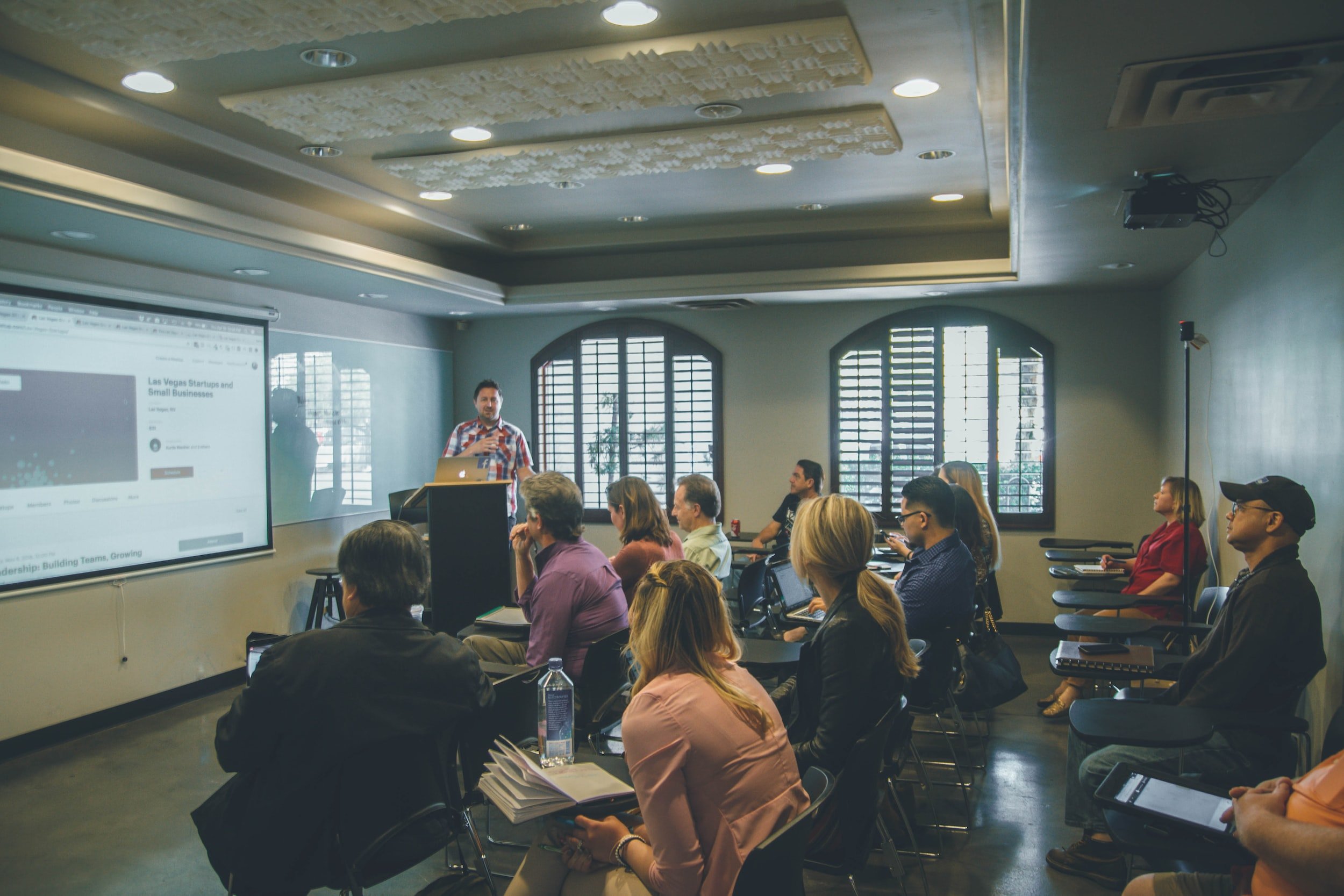
Ada County, Idaho is Growing and so is the Role of Women in its Governance
A major story following the 2018 midterm elections is the impressive gains women made in the U.S. Congress and in state races. National media, however, has largely overlooked key victories for women running for local office. For example, in Harris County in Texas, 17 African-American women won their races for local judgeships. Here in Idaho, voters elected two women to the 3-member Ada County Commission. It appears to be the first time women will hold a majority of seats on the Ada County Commission. Ada County includes Boise, the state capital and one of the fastest growing metro areas in the country.

Predicting School Closures in an Era of Austerity
In 2013 the City of Chicago undertook the largest mass school closure in recent history, declaring that the school district’s budget required shuttering 49 of its most underutilized buildings. The city erupted in protest, with the Chicago Teachers Union leading a charge of angry parents, students, and teachers.

Bold vs. Bland
Toronto has been called “the most fascinating totally boring city in the world.” Despite its low crime rate, the over-half internationally born residents, and the fact that it is one of the fastest growing cities in North America, many residents appear comfortable with incremental change or, perhaps even better, no change at all.

Making the Economic Development Process Accessible to Students
Economic development is a complex process by which local entities compete for development projects. Theory development in this area has ranged from descriptions of the economies of corporate clustering, transportation cost networks, central place theory, growth machine theory, and transaction cost theories to name a few. While these theoretical perspectives provide a basis for understanding “why” cities need economic development to survive in a highly competitive, fractured metropolitan space, these theories do little to show students the “how” of economic development decision-making.

Thorny Property Politics
Assessors play an important role in the property tax process in the United States. A homeowner’s taxes are based on the estimated value of their home, and that estimate is made by the assessor. If an assessor over- or under-values a property, then the homeowner will be over- or under-taxed. Over-taxation can produce a cascade of negative consequences, including foreclosure for failure to pay property taxes, while cities want to maintain high collection rates.

Jerusalem: The City Not Allowed To Be a City
All of Israel’s largest cities, including Tel Aviv, Haifa, and Beer-Sheva, will hold state-wide local elections on October 30. These elections will be mostly decided on traditional urban issues like public transport, plans for urban development, as well as on candidates’ charisma and basis of supporters. In Jerusalem, the capital of Israel, however, urban affairs have taken only a marginal space in the debate – instead, national politics’ embeddedness in the election sweeps a side almost any other issue.

Mississippi State is All-In
College students participate in elections at lower rates than average Americans. And yet, being in college exposes them to an environment of diversity, inclusion, political debate, political dissent, and a multitude of social interactions. If the foundations for civic engagement exist, why is there such a disconnect between the college experience and political participation?

Making (Political) Magic in Anaheim
For the past decade, the theme of Disney vs the neighborhoods has dominated Anaheim politics, and this conflict is central to the city’s 2018 elections. When voters go to the polls in November, they will select a new mayor for the first time in eight years, elect three city council members as part of the city’s new district-election format, and decide on a local living wage referendum, which may or may not eventually apply to Disney.

An Applied Economic Development Project for Urban Politics Classes
I have the pleasure of teaching an upper-level political science course called “Urban Politics & Policy.” In order to help my students connect what they are learning to real-life situations, I have them (in small groups) create economic development plans for actual U.S. cities.

Urban Governance in the Suburbs
Much of our understanding of urban politics and local governance is shaped by a focus on large central cities. Yet, many US residents don’t live in these urban spaces. In fact, a report from the Brookings Institute, notes that the distribution of population in many MSAs is significantly dispersed between the central city and suburbs. And while research on local elections and political behavior is growing, literature on politics in suburban cities remains underdeveloped.

Progressive Local Voters in the U.S. South
In May 2018, Athens-Clark County, the home of the University of Georgia, local elections took place alongside gubernatorial and other statewide office primaries, in which the mayor’s office and five seats on the 10-member unified county commission were up for their regular four-year terms, along with half the schoolboard and two judgeships. Although Athens-Clarke County is ideologically liberal, the 2014 elections for these offices saw moderate and right-leaning candidates win these non-partisan offices.

Chicago’s 2019 Elections and The Legacy of Rahm Emanuel
Incumbent Mayor of Chicago Rahm Emanuel’s recent announcement that he will not seek re-election for a third term (the election is in February 2019, with a possible run-off in April) was an earthquake that shook the city’s political landscape. Despite fairly low approval ratings, Emanuel was still the front-runner in a field in which none of the dozen declared challengers had been elected to major office. Since the announcement, many prominent Chicago pols have explored their options, and the pool of candidates is almost certain to change before the November 26 filing deadline. Chicago’s politics sit at a crossroads, as a relatively progressive and prosperous metropolis in a region where urban crisis and creeping conservative drift have been more common lately.

Surge in LGBTQ+ and Women of Color Candidates, Yet Obstacles Remain for LGBTQ+ Voters
The diversity of political candidates across the states is becoming evident with each election cycle, particularly at the local level. More women of color and LGBTQ+ candidates are not only leading strong competitive campaigns, but also winning office with progressive platforms. In 2017, for example, nine openly transgender candidates won elections mostly at the local level: four in city councils and two in school boards. Minneapolis elected two transgender council members – Andrea Jenkins and Phillipe Cunningham – making them the first out transgender black woman and first out transgender black man elected to public office in U.S. history.

Employer Responses to a City-Level Minimum Wage Mandate
Since 2012, more than 30 cities or counties have raised local minimum wages above the federal standard of $7.25 per hour. New wage laws have taken effect in large urban centers such as Los Angeles, New York City, and Chicago, and smaller cities such as Las Cruces, New Mexico and Tacoma, Washington. Advocates for minimum wage laws suggest that such measures will raise wages, reduce income inequality, and make low-wage workers better off; critics counter that higher wages may lead firms to reduce employment, ultimately making workers as a class worse off.

State Government Preemption of Local Government Decisions Through the State Courts
Why do state governments preempt local government policies? Devolution is often embraced as a normatively desirable policy goal, as it expands local autonomy and allows for policies to be tailor-made to the needs of a sub-unit’s constituents. Although decentralization has been at the forefront of the states’ rights movement, there has been limited state-level support for decentralization to the local-level. States have granted local governments some autonomy through home rule and enabling legislation but doing so involves a trade-off between the efficiency of internal policy production and potential delegation costs. Disputes between local and state governments are likely to occur when local residents have ideological preferences that differ from those of state officials.

Gendered Gentrification in Hong Kong
In a recent Urban Affairs Review article we explore how women have been impacting the social and physical upgrading of neighborhoods in one of the most competitive property markets in the world. In 2016, the most expensive apartment in Asia sold in Hong Kong for US$117 million, breaking the old record that was set in that city a year earlier. At the other end of the market spectrum, purchasing an entry-level apartment is also costly, with units as small as 163 square feet selling for $500,000. Being one of the most expensive global real estate markets ensures that space is at a premium.

Light-rail Investment in Seattle
Public infrastructure has always shaped patterns of metropolitan growth and residential segregation. Street-car lines, followed by highways, created important corridors from cities out into the so-called “Crabgrass Frontier” (Jackson 1985). New access to undeveloped suburban areas combined with government-insured mortgages with low down-payments generated vast opportunities for housing construction. However, through much of the 20th century “redlining”, discriminatory housing covenants, and exclusionary zoning maintained a system of residential stratification preventing racial and ethnic minorities from moving outward to burgeoning suburbs. Consequently, many urban neighborhoods became racially-segregated, faced disinvestment due to housing policy favoring lending to suburban contexts, and experienced increasing “mismatch” from suburban employment growth.

Order out of Chaos
American regions are made up of interdependent local governments. Their interdependencies stem from the fact that many problems, opportunities, and issues routinely ignore and transcend the clear jurisdictional boundaries between neighboring cities, counties, and towns. Figuring out how to work across those boundaries has proved both elusive and a challenging. That said, state and local governments have, over time, awkwardly, and with much experimenting, developed mechanisms of regional governance.

Sanctuary Cities
Due to the stall in immigration reform at the federal level, there has been a rapid increase in state-level immigration policies over the last 15 years. Some states pursued restrictionist policies aimed at limiting immigrants’ rights and increasing immigration enforcement, such as Arizona through SB 1070, while others have sought to expand and protect immigrant rights, such as California in declaring the entire state a sanctuary. During the 2016 campaign and in his presidency, Donald Trump repeatedly promised increasing restrictive immigration policies aimed at reducing the number of undocumented immigrants, massive deportations, building a wall on the U.S-Mexico border, and imposing harsh penalties on immigrants.

Fiscal Secession
Local governments across the United States often find themselves needing to seek out new revenue sources, particularly in the face of state limitations on taxation. Our research examines the usage of special assessments, a particularly popular, but understudied source of local revenues, in the state of California. Today, special assessments are commonly used to back local infrastructure projects and provide growing number of public services, from local fire and police protection to street maintenance and repair.